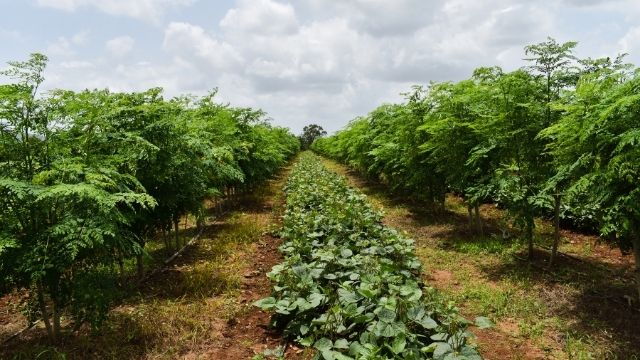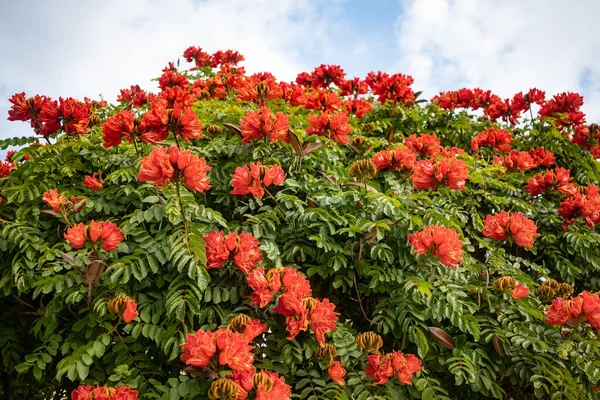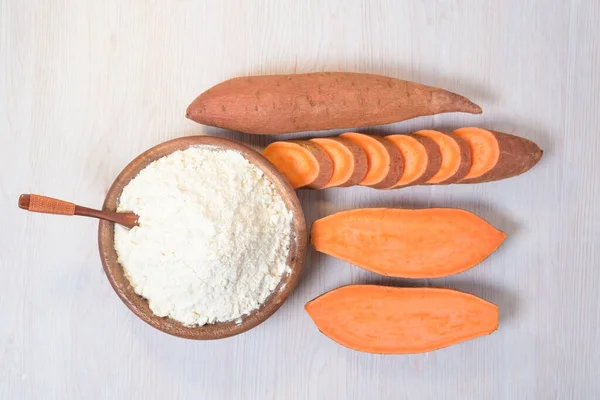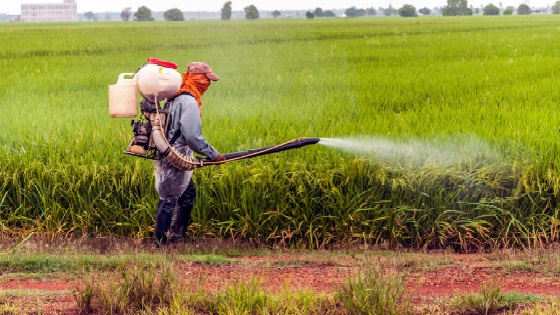Are you searching for the best native trees in Kenya?
Indigenous trees are planted for their ecological and cultural significance. While not as extensively commercialized, indigenous tree farming contributes to biodiversity conservation and ecosystem restoration efforts. The Indigenous compound trees like the Nandi Flame will give you many benefits. Apart from giving your home that classy look, you will enjoy their beauty, shade, and other benefits like fruits.
In this post, we will give you 20 types of indigenous trees in Kenya. They include Acacia, Nandi frame, Neem Tree and Baobab. Though the best choice will depend on your location you can consider the following types.
Related: Secrets of How You Can Grow money on trees
Acacia tortilis (Umbrella Thorn)
The Umbrella Thorn, or Acacia tortilis, is a hardy tree known for its umbrella-shaped canopy. It provides valuable forage for livestock and helps improve soil fertility through nitrogen fixation. Its wood is used for fuel and construction.
Acacia senegal (Gum Arabic Tree)
Gum Arabic Tree produces gum arabic, a valuable substance used in various industries. It also provides fodder and improves soil fertility.
Azadirachta indica (Neem Tree)
Neem is valued for its medicinal properties and pest-repelling qualities. It’s used in traditional medicine and agriculture.
Bamboo
Bamboo has many varieties and uses. You can grow and sell it as a potted plant for landscaping. Its mature trees are sturdy for construction, furniture, and fencing. Besides, it makes organic apparel whose fiber is non-allergic to make the comfiest bamboo bedding like bamboo duvets and comforters. You can grow it from cuttings or seedlings. The bamboo tree is a prolific vegetation, a single seedling can produce around 60 young shoots in about 3-4 years.
Baobab
Baobab trees are iconic, resilient, and long-lived species that require specific care and attention, especially during their early years of growth. Efforts to protect and conserve baobabs are essential for their survival and the preservation of their ecological significance.
Casuarina equisetifolia
Casuarina is a fast-growing tree suitable for timber, fuelwood, and windbreaks. It adapts well to various soil types.
Croton-Mukinduri
The Croton tree is found in all parts of the country both rainy and arid. It’s commonly grown for its magnificent shade fuel and building poles. However, its seeds are what makes the tree a possible replacement for coffee and other cash crops. The croton nuts are a rich source of oils that are a key ingredient of livestock and poultry feed production. There are various companies in Kenya that champion croton tree farming as a sustainable and excellent source of biofuel.
Meru Oak
Meru Oak is popularly known as the Muhuru tree in Kikuyu. It is the most valuable in making indoor and outdoor home and office furniture. Its wood resembles the valuable teak tree timber. Apart from furniture and decorative veneers, Muhuru is a good source of firewood and beams. Its over-exploitation in its natural forests has led to its near extinction giving you reasons to farm it.
Podo
Podo is also known as the yellowwood. Its block locks are fairly hard, without scent, and do not chip easily. These qualities make podo tree products the best choice for making boats, and ships Besides, the tree has many uses in construction, flooring, joinery, interior trim, vehicle bodies, railway sleepers, toys, novelties, agricultural implements, musical instruments, coffins, food containers, vats, carving, pattern making, matches, turnery, hardboard and particle board. It is also used as fuelwood, and it is considered a high-quality pulpwood.
Nandi frame
The Nandi flame is a common ornamental tree in most compounds among the rich. It will make your home bright with its reddish-orange or crimson (rarely yellow), campanulate flowers. Besides, the Nandi frame tree products are used for carving timber, food, poison, and antiseptic medicine. Its seeds, flowers, and bark extracts are used as a laxative. Besides, you can plant it to rehabilitate disturbed lands through its quick invasion and rapid growth
Related: Which are the best ornamental trees in Kenya?
Sandalwood

There is a reason sandalwood is the most smuggled timber in the region. It can be made into sandal oils, powder, and other quality wood products making its growing illegal in some countries like India and Kenya. The sandalwood matures for harvest in 15 years.
Melia volkensii (Mukau)
Mukau, or Melia volkensii, is a prized hardwood tree with excellent timber quality. It is resistant to pests and diseases, making it a valuable choice for construction and furniture.
Moringa oleifera (Moringa)
Moringa, often called the “drumstick tree,” is a versatile tree with edible leaves, pods, and seeds. It is rich in nutrients and has medicinal properties, making it a valuable addition to agroforestry systems.
Euphorbia cussonoides
This indigenous tree is valued for its medicinal properties. It is used in traditional medicine and is known for its anti-inflammatory and analgesic effects.
Syzygium guineense
Also known as Waterberry or African Cherry, this tree produces edible fruits and provides shade. It is valuable for agroforestry and has cultural significance.
Vachellia xanthophloea (Fever Tree)
The Fever Tree is a distinctive tree with yellow bark. It grows along watercourses, offering shade to crops and livestock. Its presence indicates water availability.
Related: Which are the Best Fruit trees for Kenya’s dry areas
Spathodea campanulata (Fountain Tree)
The Fountain Tree is appreciated for its ornamental flowers and shade. It’s commonly planted along avenues and in gardens.
Leucaena leucocephala (Lead Tree)
Leucaena is a fast-growing tree with nitrogen-fixing capabilities. It provides fodder, improves soil fertility, and is used in agroforestry systems.
Podocarpus falcatus (Yellowwood)
Yellowwood is a native conifer with valuable timber. It’s used for construction, furniture, and carvings.
Faidherbia albida (Winter Thorn)
Winter Thorn is a nitrogen-fixing tree with unique characteristics. Its leaves drop during the rainy season, enriching the soil.
To choose the best tree for your ecological zone, use the Infonet Biovision guide. It has information on the soil, climate, the tree uses, and the expected maturity.
Legume Fodder Trees

You will farm these trees as livestock fodder or a source of green fertilizers in organic farming settings. Leguminous trees are a source of timber, human food, and natural medicine. Besides, plant them for green fertilizers, windbreakers, or an attraction for bees and other pollinators. The best or the most nutritious fodder trees you can grow on your farm for sale are; Leucaena, acacia, calliandra, casuarina, and Sesbania.
Why grow Native trees in Kenya?
The advantages of growing indigenous trees extend beyond environmental benefits, encompassing ecological, cultural, and economic significance, making them valuable assets for sustainable land management and conservation efforts. The key benefits of growing indigenous trees are;
- Supporting Local Wildlife: Indigenous trees contribute to biodiversity by providing food and shelter for local wildlife, enhancing the ecological balance in the area.
- Adaptation to Local Climate: Well-suited to local conditions, indigenous trees require less maintenance and are resilient to climate variations, reducing the need for additional care and resources.
- Ecosystem Restoration: Planting indigenous trees aids in restoring local ecosystems, fostering the return of native species, and increasing overall biodiversity.
- Soil Stability and Conservation: Indigenous trees play a crucial role in stabilizing soil, preventing erosion, and improving soil health, promoting sustainable land management practices.
- Cultural and Historical Significance: Many indigenous trees hold cultural and historical value, contributing to traditional practices and local heritage.
- Economic and Ecological Value: Apart from economic benefits like timber, food, and medicinal resources, indigenous trees enrich the ecological value of the area, promoting a harmonious balance between human activities and the environment.



